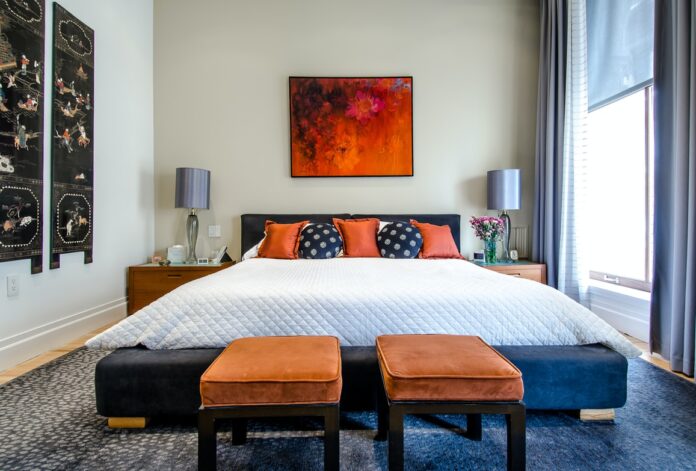According to the latest studies, insomnia is the most common sleep disorder. Every day more and more adults complain that they have problems with short-term insomnia, and 10% report chronic insomnia. As you probably know, the ability to sleep well at night has a big impact on the quality of life you lead.
Many factors can contribute to sleep problems. However, regardless of the diagnosis, our bedrooms can be part of the problem. The bedroom needs to be an oasis of peace and shelter, so make sure you decorate it in a style that suits you. Keep in mind that an ideal bedroom will provide an environment for rest, positivity, and relaxation. Here are a few tips and examples to help optimize your bedroom for better sleep. Just change a few things, and in no time, you will create a personal private paradise.
Table of Contents
Sleep on a Quality Mattress
No matter how much you adore your gorgeous and comfortable bed, it is not a good idea to use it indefinitely. You should buy a new bed, or at the very least a mattress, after at least ten years. It doesn’t matter if the bed is made entirely of wood, has a contemporary design, or is an antique passed down from grandma; what matters is that it is cozy and “healthy” for you to sleep in. There are so many different types of mattresses available today. You can visit the Anatomy of Sleep website and easily find the one that suits your needs.
Since health comes first, even though a good mattress is frequently more expensive than the bed itself, you shouldn’t let that stop you from shopping. According to statistics, we spend a third of our lives in bed. Keep that in mind when choosing perfect matters for your needs.
Block Unwelcome Noises
Many sounds can keep you up at night or make it difficult to fall asleep. Most common are televisions, neighbors, and nearby snorers. Even if you don’t recall awakening from your deep sleep, noises can still affect these cycles.
A white noise machine may be helpful if you reside in a noisy environment over which you have no control and discover that it interferes with your ability to sleep. Background noise can be muffled by white noise or soothing nature sounds, which can also help people fall asleep. White noise might also offer some relief if your partner snores.
Select Sleep-Inducing Colors
Cool colors such as light blue, gray, silver, green, and lavender, as well as neutral shades, are ideal for the bedroom. Playing with colors will help you make a perfect relaxing oasis in your bathroom. They say that cool colors can lower blood pressure and heart rate, which assists in getting a good night’s sleep. On the other hand colors like red experienced higher levels of stress. Because of that, all shades of red should most definitely be avoided.
Most of us should avoid painting our bedroom walls dark colors. Exceptions are the shift workers, such as doctors and nurses. For them, dark walls are the best option. One interesting fact dark walls make it easier to sleep during the day. Purple bedroom walls are the least conducive to a good night’s sleep. Pastel shades of green are another good option because they are also considered stress relieving. If this is too much for you, paint the walls white and use green accents.
Temperature Control and Sleep
According to research, a colder bedroom environment is associated with better sleep. Even though sleep appears to be enhanced by a cold atmosphere, environmental factors rarely affect human body temperature. One exception is REM sleep when the body’s ability to regulate body temperature is reduced and we are left to absorb the ambient temperature. Because of that, you should experiment with different thermostat settings to determine your comfort level. Most sleep experts agree that a temperature range between 60 and 72 degrees Fahrenheit is ideal for rest.
But it is reasonable to conclude that sleeping in a cool environment will usually result in a better night’s sleep, according to research on why we sleep better in lower temperatures.





